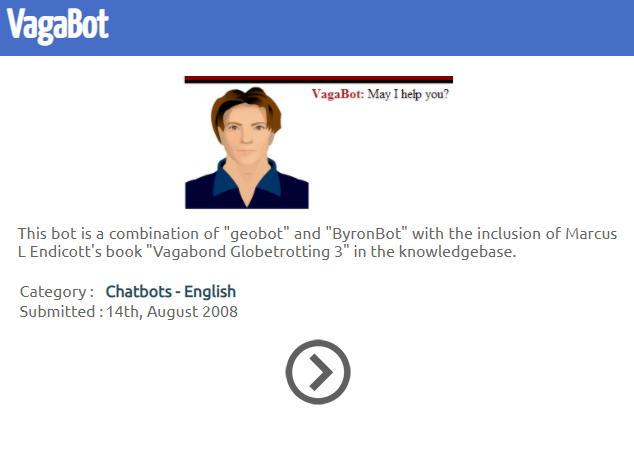
Notes:
Feed Bots: These are RPA bots designed to handle input tasks, such as ingesting data from various sources (like emails, files, databases) and feeding them into a particular system or application. Their primary role is to ensure that data is consistently and correctly inputted without manual intervention, thus automating repetitive data entry tasks.
Smart Feed Bots: Building upon the basic functionalities of feed bots, smart feed bots integrate cognitive or intelligent capabilities. They not only handle data ingestion but also make decisions based on the data they process. This might involve leveraging machine learning, natural language processing, or other AI technologies to interpret, analyze, and act upon the data in more complex ways than traditional feed bots. For example, a smart feed bot might not only import emails but also categorize them based on their content, prioritize them, and even respond to basic queries.
References:
See also:
100 Best Alternatives to Yahoo Pipes | 100 Best Business Intelligence Tool Videos | RPA (Robotic Process Automation) Meta Guide | Twitter Bots Meta Guide
[62x Sep 2023]
2008 (11x)
- 2008 @augmobot2 .. 2nd ARbot .. augmented reality
- 2008 @bottertwit .. BotterTwit .. bots
- 2008 @chatbotix2 .. Socialbotix .. chatbots
- 2008 @cloudbotix .. GAEBot .. cloud bots, google app engine
- 2008 @cortanabot .. CortanaBot .. cortana etc
- 2008 @gaiapassage .. GaiaPassage.com .. green travel
- 2008 @infotectravel2 .. infotectravel2 .. travel technology
- 2008 @mendibot2 .. mendibot2 (old) .. iterative processor
- 2008 @secondbot2 .. SecondNav .. virtual worlds, second life
- 2008 @semanticbot .. SemanticBot .. semantic web
- 2008 @semanticbot2 .. SemNav .. iterative processor
2009 (12x)
- 2009 @botforumbot .. Bot Forum Bot .. external bot forums
- 2009 @deliciobot .. DelicioBot .. social bookmarking, delicious
- 2009 @green_travel_gp .. Green Travel Group .. external forum
- 2009 @greentravel1 .. greentravel1 .. green travel agreggator
- 2009 @infotectravel1 .. infotectravel1 .. travel technology aggregator
- 2009 @metaguide2 .. Meta-Guide.com .. countries of the world, travel
- 2009 @robitron_list .. Robitron List .. external forum
- 2009 @twaveladvisor .. Twavel Advisor .. chatbot, travel
- 2009 @twitbotix2 .. TwitBot Talk .. bots, twitter bots
- 2009 @vagabot .. VagaBot .. chatbot, travel
- 2009 @virtualhumans .. Virtual Humans Forum .. external forum
- 2009 @yanswersbot .. YAnswersBot .. q&a, yahoo answers
2010 (13x)
- 2010 @aidreamsforum .. AiDreams Forum .. external forum
- 2010 @aimlforums .. AIML Forums .. external forums, pandorabots
- 2010 @ainexusforum .. AI Nexus Forum .. external forum
- 2010 @chatbotix .. Chatbotix .. chatbots
- 2010 @chatbotsforum .. Chatbots Forum .. external forum
- 2010 @guile3dforum .. guile3d Forum .. external forum
- 2010 @japbot .. Japbot .. travel, japan
- 2010 @mendibot3 .. My Own LinkedIn .. linkedin bot
- 2010 @nlpbot .. NLP Bot .. natural language processing
- 2010 @pipesnew .. YPipes News .. yahoo pipes
- 2010 @travlinks .. Trav Links .. link processor, travel
- 2010 @twavelquest .. Twavel Quest .. travel aggregator
- 2010 @ultrahalforums .. Ultrahal Forums .. external forum
2011 (12x)
- 2011 @applesiribot .. Apple Siri Bot .. siri etc
- 2011 @assistapps .. Assistant Apps .. virtual assistants, assistant apps
- 2011 @gbooksbot .. GBooksBot .. books aggreator, google books bot
- 2011 @machlearnbot2 .. MLaaSbot .. machine learning, machine learning as a service
- 2011 @metaguide .. Meta Guide Owner .. administrator bot
- 2011 @metaphorbot .. Metaphor Bot .. metaphor aggregator
- 2011 @micropaybot .. MicropayBot .. micropayments aggregator
- 2011 @opencogbot .. OpenCog Bot .. external forum, agi
- 2011 @personalityfora .. Personality Fora .. external forum
- 2011 @robojobster .. RoboJobster .. jobs aggregator
- 2011 @SellBitcoin .. Sell Bitcoin .. cryptocurrency aggregator
- 2011 @vcurrencybot .. VCurrencyBot .. virtual currencies aggregator
2012 (10x)
- 2012 @ai_forum .. Ai Forums .. external forum
- 2012 @answerdevices .. Answer Devices .. q&a apps etc
- 2012 @arabtravelbot .. Arab Travelbot .. travel aggregator, middle east
- 2012 @dbaasbot .. DBaaS Bot .. database aggregator, database as a service
- 2012 @fakeyky .. Fake YKY .. project tracker, agi
- 2012 @mindmapsbot .. Mindmaps Bot .. mindmapping aggregator
- 2012 @skynetbot .. skynetbot .. tracking agi
- 2012 @twaveladvisor2 .. Travel Hal .. chatbot, travel
- 2012 @twensored .. #twensored .. censorship tracker
- 2012 @xemabot .. XemaBot .. project tracker
2014 (1x)
- 2014 @mendibot .. mendibot .. aggregator
2015 (3x)
- 2015 @gaiapassage2 .. Gaia Passage .. aggregator, green travel
- 2015 @mgvideobot .. MG Videobot .. video aggregator bot
- 2015 @nlgbot .. NLG Bot .. natural language generation